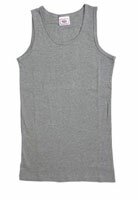Vests
February 7, 2008 – 9:37 pm
VESTS

Generally speaking a vest is an undergarment covering the upper part of the male body. There are innumerable styles and vary from one region to another. Broadly vests can be divided into two groups – the undergarment variety and the sleeveless coat or jacket kind resembling waistcoats that are worn on top.
The word comes from French veste, Italian vesta, veste and Latin vestis. All refer to an item of clothing. It made its debut in England during the reign of Charles II. One Samuel Pepys had entered in his diary that the King made an official statement that he would be starting off a new fashion – the vest! It was supposed to teach the nobles thrift.
The vest is ‘undershirt’ in USA, ‘vest’ in UK and her colonies and ‘singlet’ in Australia. It is a kind of T-shirt without sleeves generally worn under the shirt but not always. Sometimes it is used as an outer garment. The vest may be termed a cousin of the waistcoat. What is ‘waistcoat’ in UK is ‘vest’ in USA. It is often the third piece in a formal suit attire. The sports vest is worn as an outer item of clothing. Hunters wear padded vests and fishers put on the fishing-vest that comes with a plethora of external pockets for carrying fishing gear and tackle.
Another common name making the rounds in connection with vests is ‘banyan’. During the 18th century men took to this fashion influenced by the East. It is still commonly used in India as an undershirt. It also refers to a morning gown or nightgown being a loose T-shaped kimono made from cotton, linen or silk.
The latest in hot demand is the ballistic vest or the bulletproof variety that is a sort of armour which absorbs the impact from gunfire targeting the torso. These vests are soft and made from tightly woven fibres. The police and private security guards wear the soft variety. Combat troops or armed policemen facing danger at home sport the hard vests which are reinforced by plates. A helmet usually accompanies the bulletproof vest.
Most of the bulletproof types of vest do not give protection against ice picks, arrows or stabs from knives. Special kinds have been manufactured and mostly used by guards in prisons. A material known as Dyneema provides a lot of protection against attacks from blades.
The first fabric that was used as a bullet resistant was from silk. Layers and layers of silk (18/30) were used to manufacture it. In 1881 a certain Goodfellow watching a gunfight in Arizona between two contestants noticed that one escaped serious injury because of the person’s silk handkerchief. Based on the findings of Goodfellow and few other similar incidents Zeglen of Chicago went on to manufacture a bulletproof vest made from silk towards the end of the 19th century. Undoubtedly the vests were very costly. The World War I started when the Archduke Ferdinand of Austria was shot on 28th June 1918. He was wearing a bulletproof silk vest but it could not save him as he was shot in the neck. During the late 1920’s and 30’s USA gunmen gangs started wearing less expensive protective vests made from layers of cotton padding. During World War II the USA army designed many vests but most of them were too heavy. Flak jackets were made for aircraft crew. These were from nylon material and could check penetration of shrapnel and flak but not bullets.
In India the vest has become an essential part of clothing because of the hot humid climate. Generally the vests are not coloured but white. The banian, made from a special type of fabric, absorbs the sweat and grime giving the wearer comfort. It also saves the outer shirt, which without the protective vest below, would have soon got worn out eroded by body fluids and the heat. Previously when men did not wear shirts the vest was not at all in use. Men usually went bare bodied with a loose robe thrown across rippling muscles. The rich covered their chests with bejeweled necklaces. For the humble the piece of cloth thrown across the shoulders also served as a sort of towel and doubled up as a shopping bag. The introduction of shirts and vests has complicated matters. A whole new industry centering round the hosiery market has sprung up with vested interests in the production of vests.